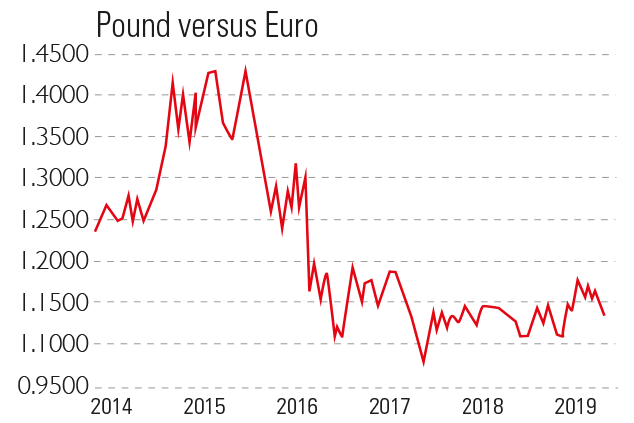
The pound hit four-month lows against the dollar last week amid another bout of political turbulence at Westminster. Sterling fell to $1.26, its lowest level since January, before recovering slightly after Prime Minister Theresa May announced her resignation. It also fell as low as €1.133 against the euro.
May has been one of the worst months since 2016 for sterling, which has shed more than 3% as traders unwound bets that politicians would eventually agree on a Brexit deal. The pound – which tends to be a “risk-on” trade – has also been hit by the wider flight from risky assets as trade tensions mount, writes Katie Martin in the Financial Times, leaving many investors sitting on the sidelines.
A hard Brexit instigated by current Tory leadership favourite Boris Johnson is seen as “the worst-case scenario” by markets, says Anooja Debnath on Bloomberg. Yet traders have not quite made up their minds about Johnson’s intentions, and the chance of a snap election all make the outlook even “murkier”.
With the path towards a Brexit resolution no clearer than it was three years ago, the real surprise is that the rout in the pound has not been worse, says David Smith in The Sunday Times. Dean Turner of UBS thinks a no-deal would see sterling plunge to $1.15 and €0.97, while a reversal of Brexit could see a “swift rebound” to $1.58. Yet whoever becomes prime minister next will “find themselves in exactly the same position” as May, says Karen Ward of JP Morgan, hampered by Parliament’s unwillingness to back a deal or to allow a no-deal.
“The last word” is with Parliament, agrees Jon Sindreu in The Wall Street Journal. “As chaotic as a Johnson-led government could be,” the most likely outcome is still a customs union or another form of “soft” Brexit. For all the “gyrations”, sterling is basically in the same place against the euro as it was two years ago. “The latest move likely won’t mean much in the long run.”